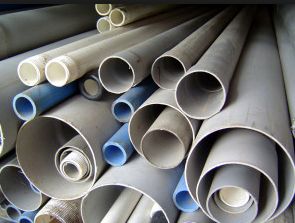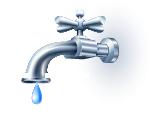Most materials used for household plumbing in the U.S. have a lifespan of close to a century, depending upon the steadiness of maintenance and the hardness of the local water. But a century isn’t forever, and re-piping a home is an expensive and disruptive undertaking that can involve tearing down wallboard and pulling up hardwood floors.
How do you know when it’s time to upgrade your whole house plumbing? Check out these three fateful signs.
Lead Or Polybutylene
The presence of either lead or polybutylene pipes is a red-flag for re-piping. Lead pipes were commonly used in household plumbing until the deleterious health effects were recognized in the mid-twentieth century, but their use (and the use of lead solder) wasn’t banned until the Safe Water Drinking Act in 1986. Since the pipes have a long lifespan, some vintage houses may need a re-pipe just to remove this danger.
Polybutylene piping, made of an inexpensive resin, was used in place of more expensive copper piping from about 1978 until 1995. It was soon discovered that a byproduct of the disinfectant process in municipal water systems corroded the polybutylene, making the pipes prone to fracturing and catastrophic breaks. A class action suit followed, and polybutylene piping is no longer used, though it still may be present in millions of homes, particularly across the Sun Belt.
Dirty Water
Brown, cloudy, or yellowish water may be coming out of your faucets for any number of reasons. If your township is doing some work on the water mains, the dirty flow will continue until the work is done. If the discoloration only appears in hot water, you may have a malfunction in your water heater. But if both cold and hot water taps produce dirty water on a regular basis, and the water has a metallic taste, the trouble is likely due to corrosion in your pipes.
Low Water Pressure
Like dirty water, low water pressure in your household plumbing can have multiple causes. If only the hot water dribbles, then the problem is likely your water heater. If only one faucet or showerhead has a lame spray, cleaning the filter or aerator should solve the dilemma. If the problem is systemic, check the pressure relieve valve where the water supply pipe enters your home to make sure it isn’t broken or closed. Finally, do a home water meter leak test to rule out undetected leaks as a cause.
If these checks do not reveal a cause for low water pressure, the problem may spring from accumulated rust and debris within the pipes. Old galvanized pipes are particularly prone to interior rust. Even old copper piping can develop pinhole corrosion.
Many homeowners do re-pipes in stages, switching out all accessible plumbing in the attic, basement, and crawl spaces, and then switching out other plumbing during later renovations. If you think it’s time for an upgrade, talk to your trusted plumber for other innovative ways to keep costs down in a household re-pipe project.



